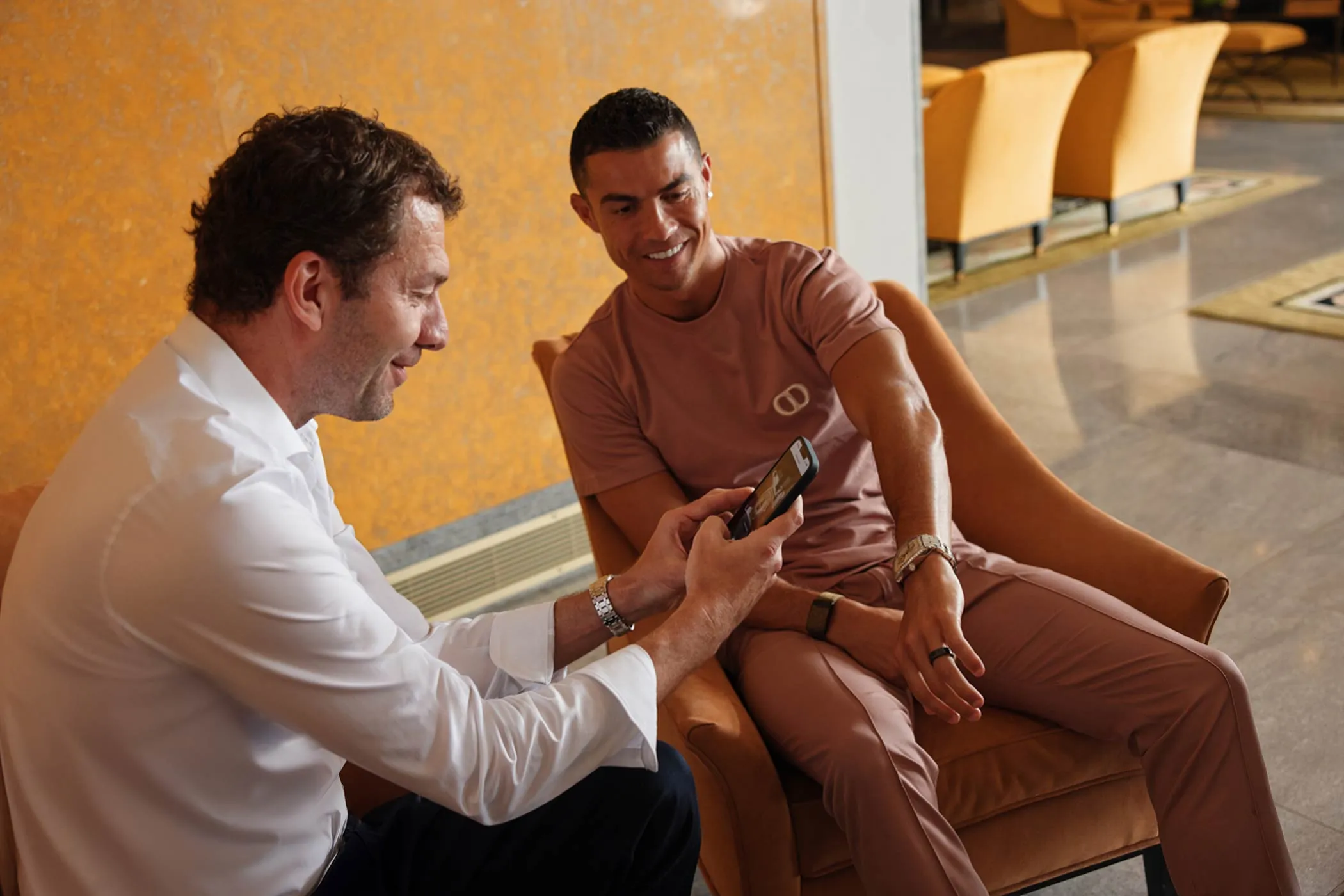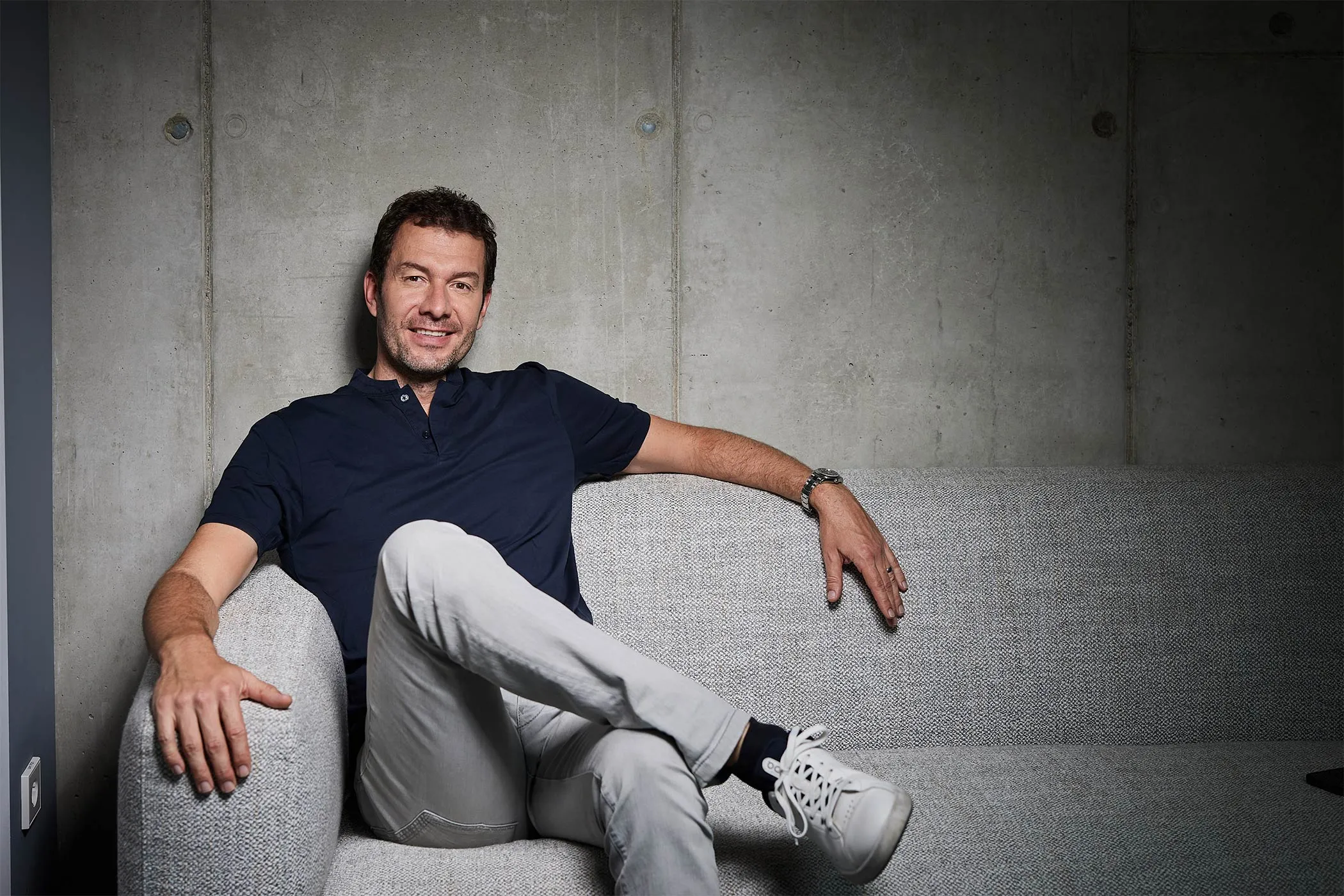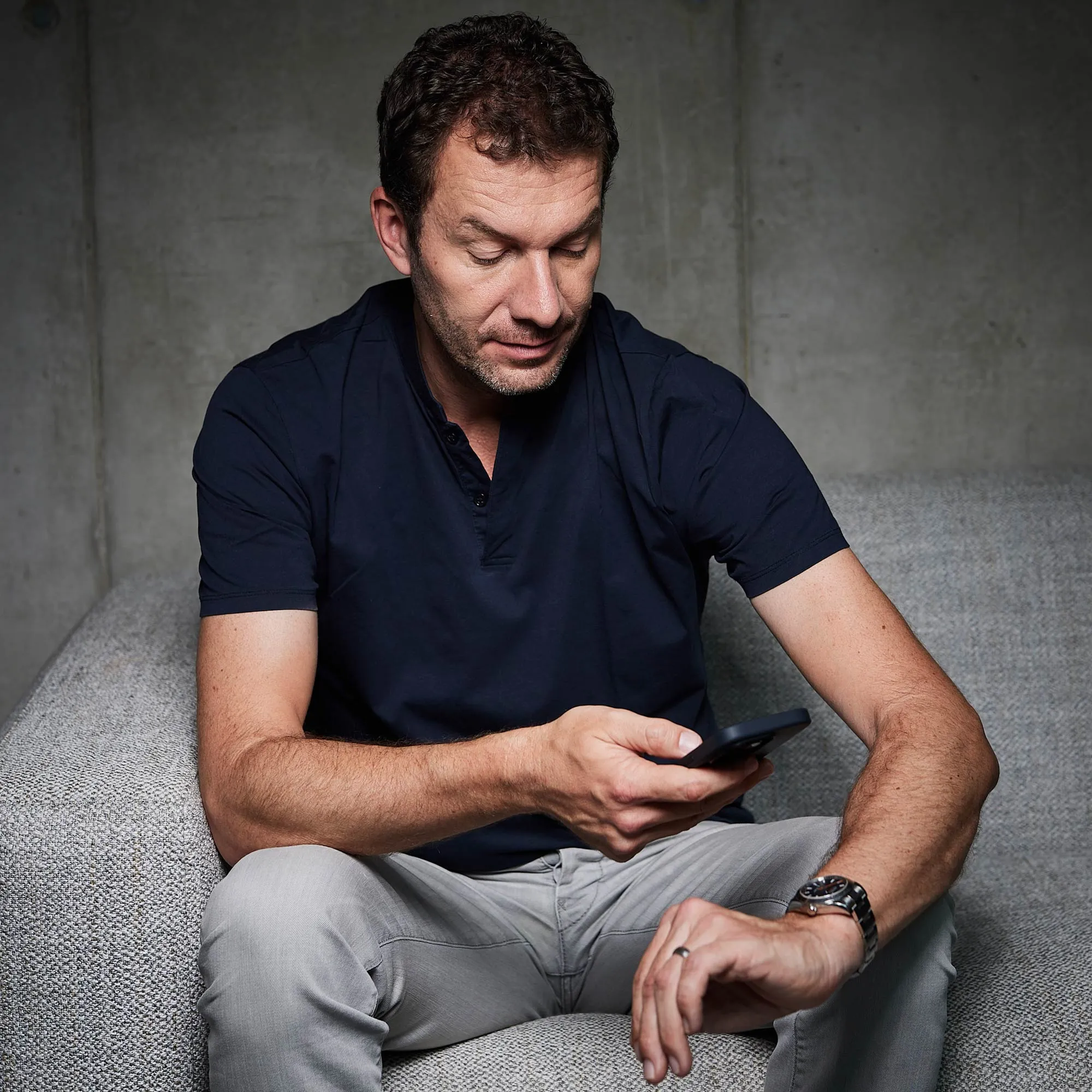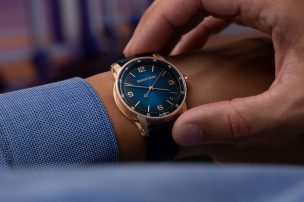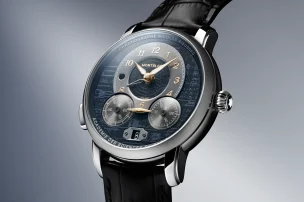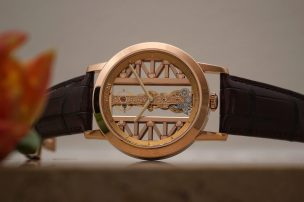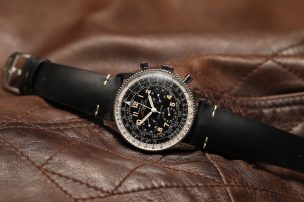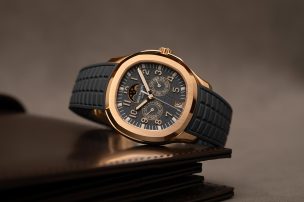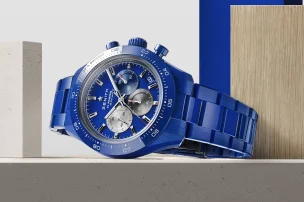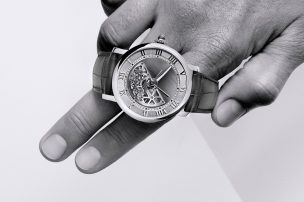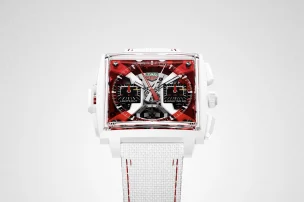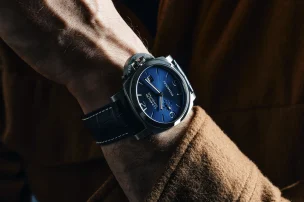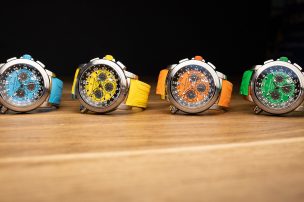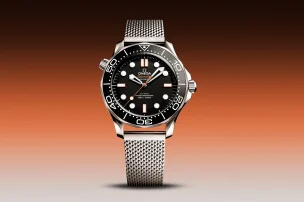
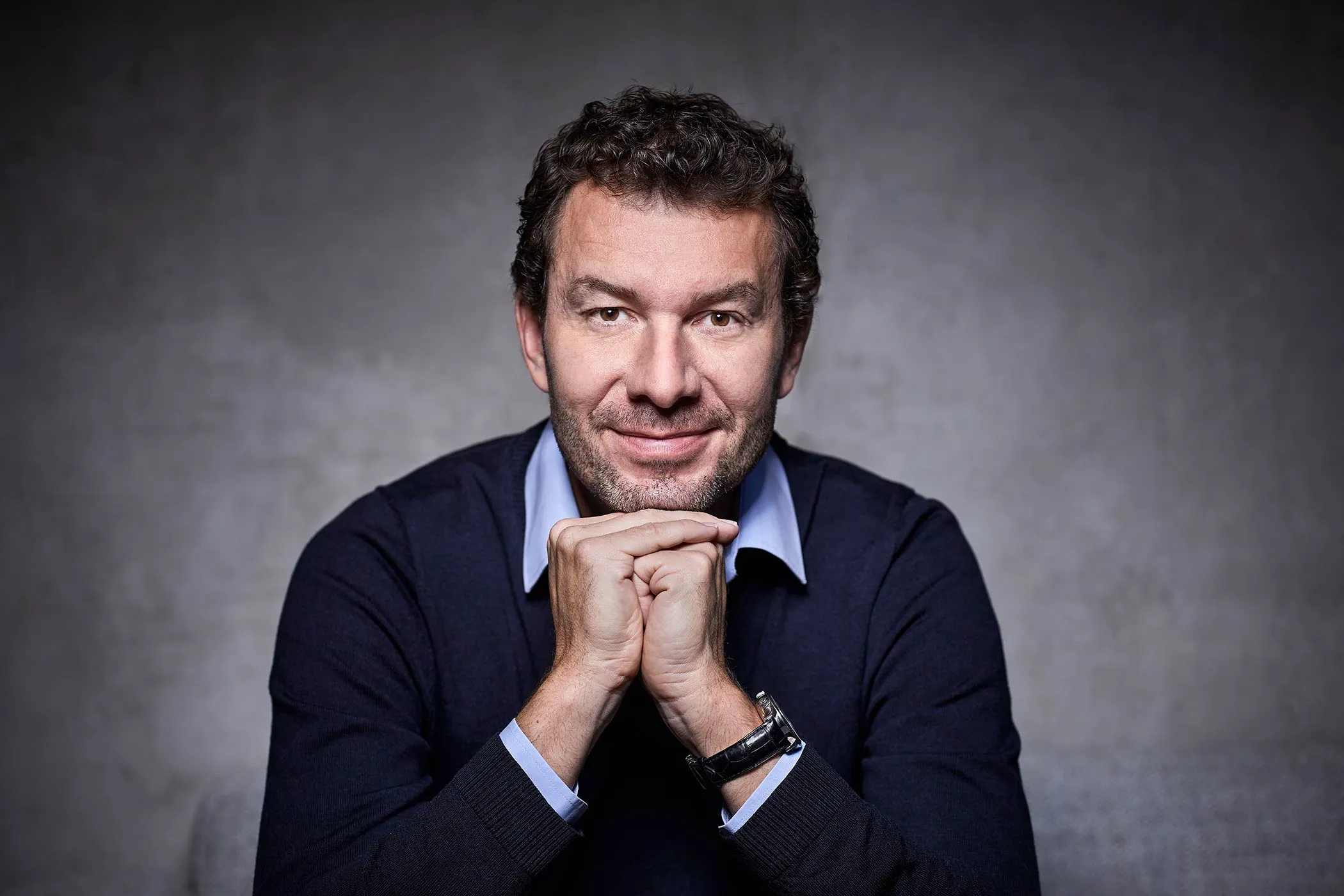
Interview With Tim Stracke of Chrono24 About The Pre-owned Watch Market And Why His Next Watch Won’t be a Nautilus
Forbes magazine recently ran the headline ‘The Lord of the Marketplaces’, referring to Tim Stracke. Having joined Chrono24 as CEO in 2010, he was the one who turned the marketplace, founded in 2003, into a leading global online platform for pre-owned luxury watches.
And he did so in a segment which, according to predictions in the ‘Deloitte Swiss Watch Industry Insights 2024’ study, will achieve the same trading volume as the market for new watches in the next ten years. The consulting firm currently estimates that the market for pre-owned luxury watches is less than half the size of the primary market.
To put this into perspective, the Swiss watch industry alone exported wristwatches worth almost 25 billion Swiss francs in 2024. We’re looking at a fast-ticking goldmine of opportunity.
Tim Stracke and the celebrities among watch lovers
No wonder, Tim Stracke is in a good mood during our conversation at the beginning of July. Although I didn’t ask the 50-year-old if he liked the title ‘Lord of the Marketplaces’, I suspect he would have referred to the entire team and possibly also to the right decisions at the right moments.
One of those moments that attracted huge media attention, even beyond the relevant watch and luxury publications, was Stracke’s encounter with the world’s highest-earning athlete: Cristiano Ronaldo. It didn’t take much to convince the self-confessed watch collector – whose collection includes timepieces worth millions – to invest in Chrono24.
In addition to the ‘significant’ sum with which CR7 came on board, Tim Stracke also valued his status as a superstar and, above all, his genuine passion for watches.
‘No one brings as much passion for luxury watches to the world stage as Cristiano,’ he commented on the five-time world footballer’s involvement with Chrono24 in 2023.
Ronaldo is thus in good company with other celebrities such as F1 racing driver Charles Leclerc and Bernard Arnault, head of the French luxury group LVMH, who has repeatedly topped the list of the world’s richest people. Both have also been investors in the online marketplace since 2024 and 2021, respectively.
‘Flippers’ are leaving the world of luxury watches
But it’s not just investments like these and famous names that have boosted the international watch market in recent years. The bubble with sometimes ludicrous prices for certain models has also stimulated demand, explains Stracke in an interview with Swisswatches Magazine.
Prices on the pre-owned watch market have fallen by almost 24 percent in the past three years. What was going on there? Normalisation after what were, in some cases, absurd price explosions? Or are those willing to invest and so-called ‘flippers’ simply turning to other products, leaving ‘only’ the true watch collectors and enthusiasts behind?
As you already mentioned in your question, there are certainly many factors at play here. One important aspect is indeed the explosion in prices on the pre-owned watch market during and after the coronavirus pandemic. The reasons for this have been and continue to be discussed at length. Although this bubble has not burst, the price situation has eased and normalised. This was necessary and is a good thing.
On the other hand, this hype phase attracted many new customers, collectors, and certainly some fortune seekers between 2018 and 2022. And, that was good for the entire watch industry because it led to enormous media coverage. Due to the sharp drop in prices over the last 12 to 18 months, many investors and speculators – fewer than many people think, by the way – have now turned their attention away from watches and are looking for new opportunities. They are no longer the biggest players on the CPO market.
Those who have discovered their passion for watches through this hype have stayed and will certainly remain loyal. I hear this in many conversations. Moreover, new watch enthusiasts and collectors are still joining the ranks.
So things are going well in the pre-owned watch market?
Basically, yes. But the protagonists now need to recalibrate and rebalance. In March of this year, we saw an initial rise in prices and an increase in purchasing activity. Then came the news about US customs duties. This initially led to some caution overall, and prices fell slightly again. However, if you look at the longer-term trend, prices are stable, even if there are small fluctuations here and there.
Chrono24 and the global pre-owned market for luxury watches
Incidentally, the original idea of selling pre-owned watches like second-hand cars was not immediately well received – neither by potential customers nor by brands and specialist retailers. I still remember the early 2000s, when the first second-hand watches made their way from classified ads, flea markets, and antique shops—places where true bargains could still be found—into the shop windows of a few jewellers and onto online marketplaces like eBay: At the time, the majority of the industry viewed these attempts with disdain or pity. It won’t catch on, people want to buy new watches. That was the almost unanimous opinion.
‘In 2003, the business of selling pre-owned watches was still in its infancy and primarily took place on eBay, among all kinds of other items. A few brick-and-mortar jewellers also tried their hand at trading pre-owned timepieces, but with little success,’ confirms Tim Stracke.
But there were also visionaries, such as Andrej Maric, who founded Chrono24 as Chrono24.com in 2003, albeit more as a sideline. The Karlsruhe-based company really took off when it was taken over by Tim Stracke, Dirk Schwartz, and Michael Krkoska in 2010. They recognised its potential, but also seized the right moment, as the market for pre-owned luxury watches was just beginning to take off and was ready for a professionally managed online marketplace.
This gradually brought an end to the existence of many ticking treasures in dusty drawers and boxes in attics and basements. Instead, forgotten and inherited timepieces became exciting and promising trading items for private individuals and dealers alike.
The market for pre-owned watches is gaining momentum
‘For many years, the market for pre-owned watches has been growing significantly faster than the market for new watches,’ as Stracke observed back in 2019. ‘However, the real hype only began in January 2018, triggered by the announcement by the then Audemars Piguet CEO Francois Bennahmias, who announced the company’s entry into this market at the time. We know that other manufacturers had also been thinking about it intensively, but Bennahmias was the first to talk about it publicly. That woke the manufacturers up and many jumped on the bandwagon.’
Within a few years, thanks to the clever and far-sighted actions of a few market players, the global second-hand watch market had gone from being a dirty little secret to a legitimate supplier, where certificates of authenticity are now a given. Confidence grew, people became more willing to spend a lot of money online, and waiting lists for certain models, especially Rolex, grew longer. All of this fuelled the pre-owned business. Prices rose, especially for so-called Grail Watches from Patek Philippe, Audemars Piguet and, of course, Rolex.
The previous record sale on Chrono24 was a Grand Complications in rose gold by Patek Philippe, which changed hands for 3.3 million euros. Want to top that? No problem. Such a model is currently being offered for just under 4.3 million euros on Chrono24. Patek Philippe itself prices it at 1.8 million euros – if it is in stock. Which is doubtful.
In addition to limited availability on the primary market, price drivers have often been and continue to be genuine limitations and the announcement that production of a particular iconic model is being discontinued. Stracke also attributed the price development to the transparency and thus comparability of prices on Chrono24. ‘When demand exceeds supply, prices rise in a transparent market. You can see that supply and demand are not balanced here,’ he remarked in 2019.
Corona – and suddenly everything changed
The watch market was no exception. The pandemic took the world by storm in 2020, bringing lockdowns and uncertainty with it. The mood was at an all-time low, and so was consumer confidence. Or was it?
Stracke recognized an opportunity for online retail in the shuttered brick-and-mortar stores as early as April 2020. While the number of watches listed on Chrono24 and the number of transactions initially declined sharply, this proved to be only a temporary setback.
‘I definitely think that online sales will grow strongly, not only during the crisis but also after it. At the moment, everyone is in shock, and I would certainly not encourage anyone to look for luxury watches right now. Take care of your loved ones, that’s much more important,’ said the then Chrono24 CEO in spring 2020.
But: ‘We are not like the aviation or hospitality industries. When people don’t fly or go out to restaurants, business is lost. Watches are different. Even if a shop is closed for several months, you can buy online or wait until the shop reopens to buy the watch you’ve always wanted. We see that the purchasing journey often takes six to twelve months anyway.’
And he was right. Chrono24 closed the first pandemic year of 2020 with a 25 percent increase in trading volume to around two billion euros. And Tim Stracke even gave the following watch year 2021 a ‘very good’ rating.
‘During the lockdowns, online remained the only alternative, and we were able to gain many new users during that time. (…) Personally, I am curious to see how the market prices of Rolex models will develop. This year, it was almost as exciting as the stock market and the only trend was upwards.’ Stracke gave this statement in December 2021, unaware that the price slump that would begin just a few months later.
The bubble is expanding – and losing air
The crazy price rally for individual models on the pre-owned market initially seemed unstoppable. In 2021, for example, Rolex Submariners sold for 80 per cent above the retail price on Chrono24. And prices that were beyond belief were also asked – and paid – for Patek’s Nautilus and some Royal Oak models from Audemars Piguet.
‘Our results show that the international watch market is extremely buoyant. Prices for luxury watches have risen by over 70 per cent since 2020,’ said Stracke in September 2022.
However, after peaking in April, there had already been a massive downward dip in the price curve. In the summer of 2022, investment bank Morgan Stanley reported that the phase of unprecedented price increases for luxury watches on the secondary market had come to a halt at the end of the first quarter of 2022 and that price trends for many popular models had reversed in the second quarter. The same was true at Chrono24: ‘Yes, we have seen falling prices for some iconic models such as the Nautilus, the Daytona and the Royal Oak. But prices are still at a very high level, well above the retail price. This is a trend we are seeing particularly with the models mentioned above. The market for hyped luxury watches is cooling down and settling at a realistic level.’
The market for pre-owned luxury watches is normalising
Since then, prices have not taken off again, but are stabilising at a level above pre-coronavirus levels.
According to the WatchChart platform, which monitors 300 watches from the top 10 luxury brands, there has been a 20 per cent increase in prices on the pre-owned market in recent years (Rolex +16.1 per cent, AP +53.9 per cent, Patek +57.4 per cent). However, looking at the last six months, there has been a slight decline of 0.6 per cent (Rolex +0.5 per cent, AP -1.8 per cent, Patek -0.2 per cent).
ChronoPulse, Chrono24’s analysis tool based on actual transactions, even shows a decline of over five percent across all 14 top brands recorded over the past six months. Prices for many Rolex, Patek, and AP models have also fallen here in recent months.
However, the big bang that some feared would burst the price bubble on the pre-owned luxury watch market did not happen. But it has clearly lost momentum. Pre-owned watches are still in high demand, though. ‘The price situation has eased and normalised. That was necessary and is a good thing,’ Stracke now reveals in retrospect in an interview with Swisswatches Magazine.
Meanwhile, brands such as Breitling, Rolex, Vacheron Constantin, and Richard Mille have also discovered the large market for pre-owned luxury watches and launched their own programmes to secure a share of the pie or to better control the trade in second-hand watches of their own brands. The best known is probably Rolex’s Certified Pre-Owned programme, which was rolled out in collaboration with a select group of jewellers at the end of 2022. Leading the way is the Bucherer jewellery chain, which had already entered the business of certified pre-owned watches. Bucherer operates over 100 points of sale worldwide and was acquired by Rolex in 2023. However, Stracke does not see this as a threat to his own business, as he explains in an interview with Swisswatches Magazine. And while he’s at it, he also talks about his latest treasure for his wrist and reveals why his next watch will not be a Nautilus.
You must have an extensive watch collection. But have you ever bought a new watch from a jeweller?
To be honest, I’ve only bought one watch from a jeweller. I was curious to see what it was like, how the consultation process works – and I wanted the watch right away.
And how was the jeweller’s experience?
Better than expected. The consultant was so good that I wanted to recruit him and left him my business card. Unfortunately, that didn’t work out (laughs).
And what was the last watch you bought?
A Freak by Ulysse Nardin, which I’m wearing right now. One reason was that I really like the team. They are good, trustworthy guys with a lot of experience.I also find the story behind the Freak very exciting. It’s a watch without hands, where the movement takes over their function. I’ve been fascinated by unusual mechanics since I was a child and teenager. It was mechanics that first got me interested in watches. I only realised later that brands can also fascinate with their history.
Which watch is currently at the top of your wish list?
I’m currently looking at various complications from Patek Philippe. But it won’t be a Nautilus. Because I don’t want to be one of many with a Nautilus on my wrist at Watches & Wonders, for example. (laughs)
Let’s move on to Chrono24. You have not been involved in the operational side of the business since the beginning of last year. Now you have also stepped down as chairman of the advisory board. How difficult was it for you to let go? Chrono24 is, in a sense, the baby you raised.
It wasn’t really about letting go, but rather a conscious, active decision about what is best for the company. I am still a very active member of the advisory board, but I am also one of the largest shareholders. And as such, you always have strong opinions that need to be moderated. That is the job of the chairman of the advisory board. When you are also a shareholder, that can sometimes be a conflict.
I had wanted my successor, Tobias Hartmann, to join the advisory board for some time. When he decided to leave Scout24, where he had been CEO for many years with great success, we quickly agreed internally and with him that he would join Chrono24 not just as a member, but as chairman of the advisory board.
He brings a fresh mindset to the table. That’s why I feel very comfortable with this conscious decision, as my new role allows me to express my opinion even more clearly, which of course is not always shared by everyone. The discussions in the advisory board are much more constructive when they are moderated by an independent chairperson. So this decision was primarily about optimising internal processes.
Has your view of the watch world changed in recent years?
Basically, your own view changes with every conversation you have with someone from the watch industry. And I enjoy having lots of conversations. Of course, I also have a little different perspective on the industry today than I did two years ago, for example. A lot has happened in that time. And something new is always happening, and there is always new news affecting the global watch market. A current example is the newly imposed customs barriers. The market remains very volatile and that makes it exciting, constantly changing your perspective.
Would you dare to predict how the pre-owned market will change in the coming years?
Overall, the pre-owned watch segment will experience very strong growth. If you get in now, you will certainly see an increase in value in the long term. But you have to be patient. You can see that very clearly on the watch itself. (laughs) In other words, I wouldn’t advise anyone to buy watches as an investment at the moment; there are other vehicles that are performing better right now.
What about the many independent watch brands that seem to be springing up like mushrooms? What effect will they have?
We have been thinking about the smaller brands internally for a long time. However, I think that the big, well-known brands will continue to lead the field in the coming years. If you look at the trading volume of pre-owned watches today, these brands account for a huge share, with the small brands perhaps making up five per cent of the total. I don’t think that will change anytime soon.
You mentioned the usual suspects. In recent months, there have been two exciting new launches in particular that have been the subject of much discussion: the Land-Dweller from Rolex and the Cubitus from Patek Philippe. What do you think about them?
I actually think the Cubitus is quite cool. But I also understand those who criticise the design as being too obviously a square Nautilus. I think that’s the crux of the matter. Not the design as such, but the fact that it’s a square Nautilus, so to speak.
It’s still too early to say how the model will perform on the second-hand market. The trading volume is still too low for that. And you only see a few Cubitus models on wrists and in boutiques. They are hardly available on the primary market.
The asking prices on the second-hand market are correspondingly high and significantly above the original retail price. But not as massively as was the case with other models in the past. But as I said, it’s still too early to make a reliable statement.
And what about the Land-Dweller?
At Watches & Wonders, I actually had to look at the watch several times before I was convinced. Each time, I liked it a little better. This is of course also due to the new mechanism that Rolex introduced together with the Land-Dweller.
I also like the homage to the design of the Oysterquartz, which I would never have bought because of the lack of a mechanical movement. In terms of the pre-owned market, the trading volume for the Land-Dweller is even lower than for the Cubitus, so it’s even harder to make a valid statement.
Major brands are increasingly trying to take over the business of selling their pre-owned watches themselves, for example Rolex. Why should one still buy from Chrono24?
At Chrono24, buyers can compare offers from many different dealers. Here, you don’t just see the range of a single seller. But of course, the offers that Rolex, for example, makes in collaboration with jewellers are always an option. However, they are expensive, that much is clear.
If you compare this with online marketplaces, you pay up to 35 percent more. That may be fine for some people, as it’s a different shopping experience. But you also get certified security from other dealers and, of course, from us. Incidentally, watches from Rolex’s Certified Pre-Owned programme are now also available on Chrono24.
About Tim Stracke
Tim Stracke graduated with a degree in industrial engineering from the University of Karlsruhe (TH) and earned an MBA in the United States. In 2001, he founded mentasys GmbH, which he turned into Germany’s leading technology service provider for online price comparisons and sold to a subsidiary of Bertelsmann AG in 2006. Prior to that, he worked briefly as a consultant at the Boston Consulting Group in Buenos Aires and, in 1999, at the age of 25, founded his first VC-financed company, a marketplace for gifts.
After leaving mentasys in 2008, Stracke has been involved in over ten Internet companies in Europe and China as a founder or investor, mainly in online marketplaces. One of these is the Karlsruhe-based watch platform Chrono24, which he took over together with Dirk Schwartz and Michael Krkoska in 2010 and where he held the position of Co-CEO, together with Holger Felgner from 2016 onwards. At the beginning of 2024, both handed over the CEO baton to Carsten Keller, who had previously played a key role in developing Zalando’s marketplace model. Tim Stracke and Holger Felgner remained important shareholders and joined the advisory board of Chrono24, with Stracke also serving as chairman. He handed over this role on 1 June 2025 to Tobias Hartmann, who was previously CEO at Scout24.
About Chrono24
Since 2003, over 1.6 million watches have been sold via Chrono24. Currently, around 560,000 watches are listed for sale. They are offered by around 3,000 dealers and 60,000 private sellers. The portal reaches more than nine million unique visitors per month in over 120 countries. In 2022, the certification and authentication specialist Chrono24 Direct was founded, and in 2023, the analysis tool ChronoPulse was added. The latter uses over 4.6 million data records from two decades of historical analysis and real sales data from the secondary market for watches to map sales trends and market developments.
In 2024, Carsten Keller took over the CEO position from Tim Stracke and Holger Felgner. At the beginning of 2025, the company laid off 110 employees as part of a restructuring measure against the backdrop of a very volatile global watch market. Today, Chrono24 employs around 350 people at its headquarters in Karlsruhe and at its branches in Europe, Asia, and the USA.
